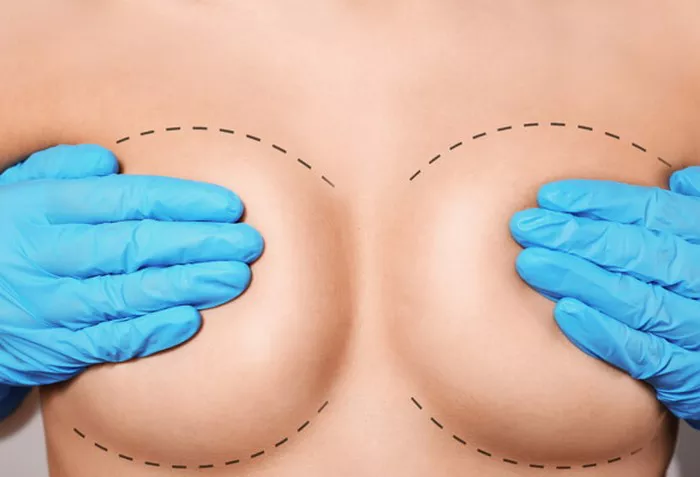The decision to undergo breast augmentation is often accompanied by anticipation and excitement for the transformative results. However, understanding the post-operative journey, including the duration of discomfort, is crucial for individuals embarking on this aesthetic enhancement. In this comprehensive guide, we delve into the intricacies of the healing process after breast augmentation, addressing the common question: “How long for breast implants to stop hurting?”
The Initial Days
Adjusting to the New Normal: The immediate post-operative period is characterized by some level of discomfort and pain as the body adjusts to the presence of the implants. Surgeons typically prescribe pain medications to manage this initial discomfort. It’s essential for individuals to follow the prescribed dosage and frequency to ensure effective pain control during this phase.
Swelling and Bruising: Swelling and bruising around the breast area are common in the days following surgery. This contributes to the sensation of tightness and discomfort. Applying cold compresses as directed by the surgeon and maintaining a gentle support bra can help alleviate swelling and provide additional comfort.
The First Week: Understanding the Variability of Recovery
Individual Variations: The duration of pain and discomfort after breast augmentation can vary among individuals. Factors such as pain tolerance, overall health, and the surgical technique employed by the surgeon contribute to this variability. Some individuals may experience relatively mild discomfort, while others may require a longer period for the pain to subside.
Monitoring for Complications: While some level of discomfort is expected, individuals should be vigilant for signs of potential complications, such as excessive swelling, severe pain, or unusual changes in breast appearance. Prompt communication with the surgeon is crucial if any concerns arise during the initial recovery phase.
The Second Week: Gradual Improvement in Comfort
Transitioning to a New Normal: As the initial swelling begins to subside, many individuals start to experience a gradual improvement in comfort during the second week. The use of prescribed pain medications may decrease, and individuals often find relief through over-the-counter pain relievers. It’s important to continue following the post-operative care instructions provided by the surgeon.
Resuming Light Activities: While strenuous activities should still be avoided, individuals may be encouraged to gradually resume light activities during the second week. Gentle movements and stretching can contribute to improved circulation and aid in the overall healing process.
Weeks 3-4: Strides Toward Normalcy
Reduced Dependency on Pain Medications: By the third and fourth weeks, many individuals experience a significant reduction in pain and discomfort. This often coincides with a decreased reliance on prescription pain medications. Surgeons may recommend transitioning to over-the-counter pain relievers as needed.
Returning to Routine Activities: Individuals can generally resume more routine activities as advised by their surgeon. However, it’s crucial to avoid activities that involve heavy lifting or strenuous upper body movements until explicitly cleared by the surgeon. Adhering to these guidelines is essential for a smooth and uncomplicated recovery.
Beyond the First Month
Full Comfort and Normalcy: For most individuals, the discomfort associated with breast implants significantly diminishes within the first month, marking a pivotal point in the recovery journey. By this stage, many can engage in a broader range of activities and may feel a sense of normalcy in their daily lives.
Potential for Residual Sensations: While the majority of individuals achieve full comfort within the initial month, some may experience residual sensations, such as occasional twinges or mild discomfort. These sensations are often part of the ongoing healing process and are not typically cause for concern. However, individuals should communicate openly with their surgeon about any lingering discomfort.
Factors Influencing Healing Time
Individual Healing Responses: The body’s healing response is highly individual, influenced by factors such as genetics, overall health, and adherence to post-operative care guidelines. Some individuals may have a more accelerated healing process, while others may require a slightly longer recovery.
Surgical Technique: The specific surgical technique employed by the surgeon can impact the duration of post-operative discomfort. Techniques that minimize trauma to the surrounding tissues may contribute to a smoother and quicker recovery.
Post-Operative Care Adherence: Strict adherence to post-operative care instructions is paramount for a comfortable and complication-free recovery. Individuals must follow guidelines related to medication, activity restrictions, and follow-up appointments to optimize their healing trajectory.
When to Consult the Surgeon
Persistent or New-Onset Pain: While some discomfort is expected during the recovery period, persistent or new-onset pain that is not alleviated by prescribed or over-the-counter medications should be promptly communicated to the surgeon. This may warrant further evaluation to rule out potential complications.
Unusual Changes in Appearance: Any unusual changes in the appearance of the breasts, such as asymmetry, excessive swelling, or changes in skin color, should be brought to the attention of the surgeon. Timely communication allows for prompt assessment and intervention if necessary.
Final Thoughts
In conclusion, the duration of discomfort after breast augmentation varies among individuals, with many experiencing significant relief within the initial month. The journey to “How long for breast implants to stop hurting?” is a dynamic and individualized process, influenced by factors such as pain tolerance, surgical technique, and post-operative care adherence. Open communication with the surgeon and a commitment to following guidelines contribute to a smoother recovery, allowing individuals to embrace their transformed selves with confidence and comfort.


